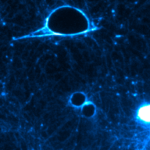Link to Pubmed [PMID] – 29866424
Anaerobe 2018 Apr;
Clostridium perfringens causes many different histotoxic and enterotoxic diseases in humans and animals as a result of its ability to produce potent protein toxins, many of which are extracellular. The current scheme for the classification of isolates was finalized in the 1960s and is based on their ability to produce a combination of four typing toxins – α-toxin, β-toxin, ε-toxin and ι-toxin – to divide C. perfringens strains into toxinotypes A to E. However, this scheme is now outdated since it does not take into account the discovery of other toxins that have been shown to be required for specific C. perfringens-mediated diseases. We present a long overdue revision of this toxinotyping scheme. The principles for the expansion of the typing system are described, as is a mechanism by which new toxinotypes can be proposed and subsequently approved. Based on these criteria two new toxinotypes have been established. C. perfringens type F consists of isolates that produce C. perfringens enterotoxin (CPE), but not β-toxin, ε-toxin or ι-toxin. Type F strains will include strains responsible for C. perfringens-mediated human food poisoning and antibiotic associated diarrhea. C. perfringens type G comprises isolates that produce NetB toxin and thereby cause necrotic enteritis in chickens. There are at least two candidates for future C. perfringens toxinotypes, but further experimental work is required before these toxinotypes can formally be proposed and accepted.
